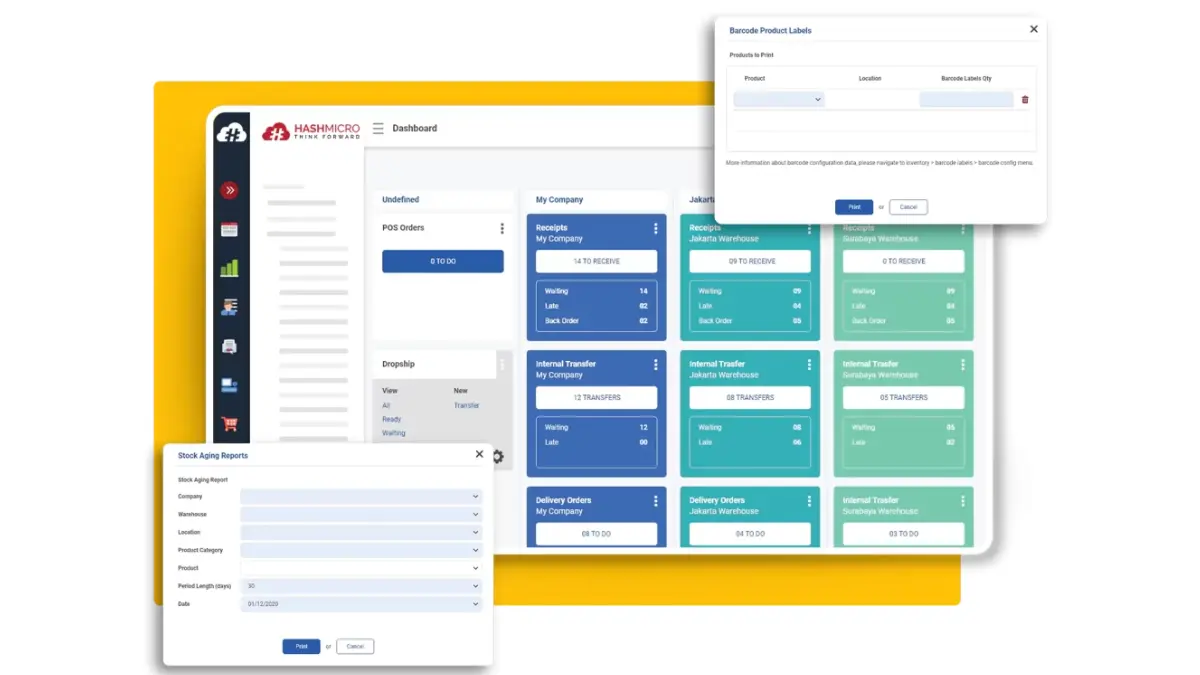Kumusta, kabayan. Are you struggling with inventory shortages or excess stock tying up your cash flow? Many businesses in the Philippines face these challenges, along with maintaining strong supplier relationships and optimizing costs.
If you’ve ever felt the strain of mismanaging orders, Minimum Order Quantity (MOQ) might just be the solution you need. By mastering MOQs, you can prevent costly stockouts, reduce excess inventory, and streamline your purchasing process.
Whether it’s improving supplier negotiations or enhancing cash flow, understanding MOQ will lead to more efficient operations and better financial results. Keep reading to learn how MOQ can fix these common business problems and drive your success!
Key Takeaways
|
Table of Contents

What is Minimum Order Quantity (MOQ)?

Minimum Order Quantity, or MOQ, refers to the smallest amount of product a supplier is willing to sell at one time. This purchasing limit is set to ensure that production and shipping costs are covered while still allowing the supplier to make a profit.
For businesses, understanding this limit is crucial because it directly impacts how much inventory you will need to purchase, store, and eventually sell. For buyers, understanding these limits ensures that they don’t order too much or too little, aligning with their budget and storage capacity.
Why Do Suppliers Use Minimum Order Quantities?
Suppliers use minimum order quantities to cover production costs and prevent losses, ensuring the efficiency of operations by covering expenses like raw material inventory and labor. This practice also streamlines consignment inventory management, maintaining a balanced flow of goods.
By doing this, suppliers can also avoid the complications of handling multiple small orders, which can increase production time and reduce overall profitability. In essence, MOQs are established to protect both suppliers and buyers. Suppliers usually use an inventory management system to automate MOQ.
Types of Minimum Order Quantities
There are two primary types of Minimum Order Quantities (MOQs), each offering different advantages and challenges depending on your business model and product type. Those are:
- High Minimum Order Quantities (High MOQ):
Products that are expensive to produce or require significant upfront investments, like custom-made items, often have high MOQs. For small businesses, high MOQs can be challenging due to the large capital required and the need for substantial storage space. - Low Minimum Order Quantities (Low MOQ):
These MOQs are typical for smaller, mass-produced items, where production costs are minimal. Low MOQs provide businesses with more flexibility, as smaller orders reduce inventory risks and minimize the need for large storage areas.
By comparing the two, high MOQ offers better per-unit pricing, while low MOQ allows for greater flexibility and reduced financial risk, making it easier to adapt to changing demand or market conditions.
How Does Minimum Order Quantity Impact Inventory Management?
MOQ directly affects inventory management strategies. A higher MOQ means you’ll need to order in bulk, which can lead to increased storage costs and risks of overstocking. Conversely, a lower MOQ can help maintain leaner inventories but may require more frequent orders, potentially increasing shipping costs.
For businesses, managing the cash flow implications of MOQs is crucial. Large purchases can tie up capital in inventory, reducing available funds for other operational needs. However, when managed well, MOQs can improve profitability by ensuring that stock levels meet demand without excess or shortage.
How to Calculate Minimum Order Quantity
Calculating the right Minimum Order Quantity (MOQ) requires following a series of steps to ensure that your order quantity aligns with your business needs, balancing demand, costs, and profitability. Here’s how you can do it:
- Determine Product Demand
Assess the demand for your product over a specific period. This will help you understand how much stock you need to meet customer demand without overstocking. - Calculate the Break-even Point
Identify the point where your total production costs equal the revenue from sales. Consider factors like production costs and the price you plan to charge for your product. - Factor in Holding Costs
Include costs associated with holding inventory, such as storage, insurance, and handling. These costs influence how much stock you can hold without negatively impacting your profitability. - Finalize the MOQ
With demand, break-even point, and holding costs in mind, finalize the MOQ that strikes a balance between fulfilling demand, covering costs, and optimizing profitability.
By following these steps, you can set an MOQ that helps your business run efficiently while meeting both financial and operational goals.
Common Mistakes in Setting MOQ
Setting the wrong Minimum Order Quantity (MOQ) can lead to various operational and financial issues. Here are three common mistakes businesses often make when establishing their MOQs:
- Setting the MOQ Too High
When MOQs are set too high, businesses can end up with excess inventory, leading to overstock, tied-up capital, and higher storage costs. - Setting the MOQ Too Low
If the MOQ is too low, businesses may face frequent reorders, resulting in increased shipping costs and inefficiencies in supply chain management. - Failing to Regularly Review and Adjust MOQs
Not regularly reviewing and adjusting MOQs based on current demand or sales data can result in missed opportunities for optimization, leading to poor cash flow and inventory imbalances.
To avoid these mistakes, it’s essential to continuously analyze sales trends and supplier capabilities to ensure your MOQ is balanced and aligned with your business needs.
Benefits of Using Minimum Order Quantities

Using Minimum Order Quantities (MOQ) can have a significant impact on your business. Whether you’re a supplier or a buyer, understanding how to leverage MOQ can lead to better financial outcomes and improved operational efficiency.
- Cost Savings for Suppliers: Suppliers can reduce production costs by consolidating orders, leading to higher profitability and more streamlined operations.
- Better Pricing for Buyers: Buyers often benefit from bulk discounts and better pricing when ordering larger quantities, which helps improve financial management.
- Stronger Supplier Relationships: Consistent order sizes strengthen supplier-buyer relationships, leading to better delivery terms and more favorable future negotiations.
By using MOQ strategically, businesses can ensure that they optimize both costs and supplier relations, leading to long-term success in the marketplace.
Factors That Influence Minimum Order Quantities
Several important factors come into play when determining Minimum Order Quantities (MOQ). Suppliers take various internal and external considerations into account, which can influence how MOQs are set and adjusted over time.
- Raw Material Costs: Higher raw material costs may drive suppliers to increase their MOQ to ensure they cover expenses.
- Production Capabilities: Suppliers with larger production capacities might set higher MOQs to optimize their operations and reduce inefficiencies.
- Market Demand and Competition: In competitive markets, suppliers may lower their MOQ to attract smaller buyers and maintain market share.
By understanding these factors, businesses can negotiate more favorable terms and set realistic expectations when ordering from suppliers. Staying informed about market conditions and supplier capabilities ensures that your MOQ is aligned with your operational needs such as buffer stock.
Using MOQ for Inventory Forecasting
MOQs play a critical role in inventory forecasting. By analyzing your MOQ alongside sales data, you can predict demand more accurately and manage your stock levels efficiently. This ensures that you always have enough inventory to meet customer demand without holding onto excess stock.
Regularly reviewing and adjusting your MOQ is essential for staying on top of market trends and optimizing your inventory forecasting. This proactive approach can help your business reduce waste, improve cash flow, and maintain a lean, efficient inventory system.
Manage Minimum Order Quantity Using HashMicro’s Inventory Software

Effectively managing your Minimum Order Quantity (MOQ) requires the right tools to optimize stock levels and streamline inventory processes. HashMicro’s Inventory Software offers advanced features that help businesses set and maintain optimal MOQs.
- Stock Forecasting: Accurately predict future demand to set appropriate MOQs and avoid overstock or stockouts.
- Run Rate Reordering Rules: Automatically reorder stock based on real-time sales data to ensure MOQ alignment with demand trends.
- Fast Moving Slow Moving Stocks Analysis: Identify which products are moving quickly or slowly to adjust your MOQ strategy accordingly.
- Stock Optimizer per Warehouse: Manage and optimize stock levels across multiple warehouses, ensuring the right MOQ for each location.
By utilizing these features, businesses can streamline their purchasing decisions and better manage inventory levels, leading to improved cash flow and operational efficiency. Even if you are still considering other inventory software, you can try our software for free here and experience the benefits firsthand.
Conclusion
Understanding and managing your Minimum Order Quantity (MOQ) is vital for maintaining efficient business operations, optimizing inventory, and improving profitability. By mastering MOQ, you can avoid costly stockouts, reduce excess inventory, and enhance supplier relationships—key factors in running a successful business.
HashMicro’s advanced tools will help you optimize your MOQ and ensure your business stays competitive in the market. Don’t wait—If you’re ready to take control of your inventory and streamline your purchasing process, try our free demo today!
Frequently Asked Questions
-
Why is Business Process Reengineering important?
Business Process Reengineering (BPR) is crucial for improving efficiency by redesigning workflows and eliminating inefficiencies. It helps businesses stay competitive and adapt to changing market demands.
-
What are the four stages of BPR?
The four stages of BPR are process identification, process analysis, process redesign, and process implementation. These steps help streamline operations for better efficiency and performance.
-
What are the functions of BPR?
BPR functions to optimize processes, reduce costs, and improve overall productivity. It focuses on transforming business workflows for better results and greater customer satisfaction.




































